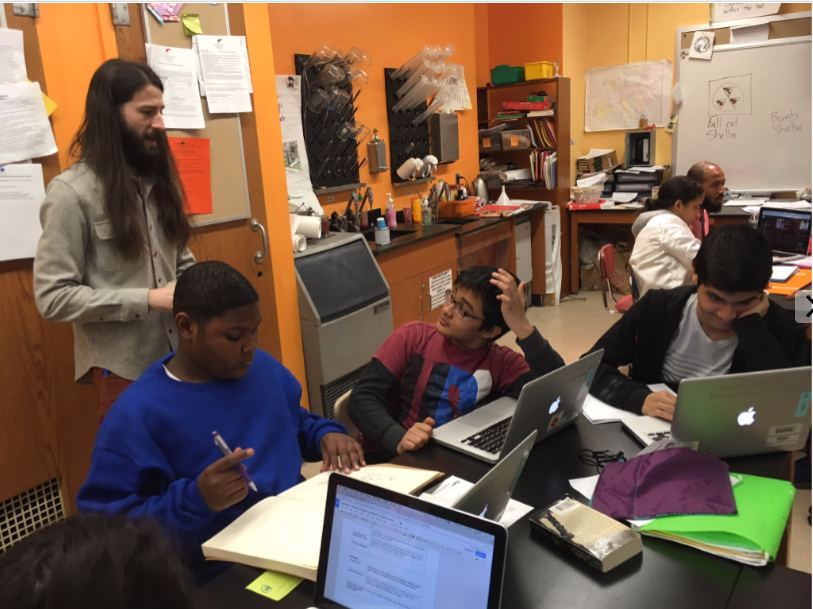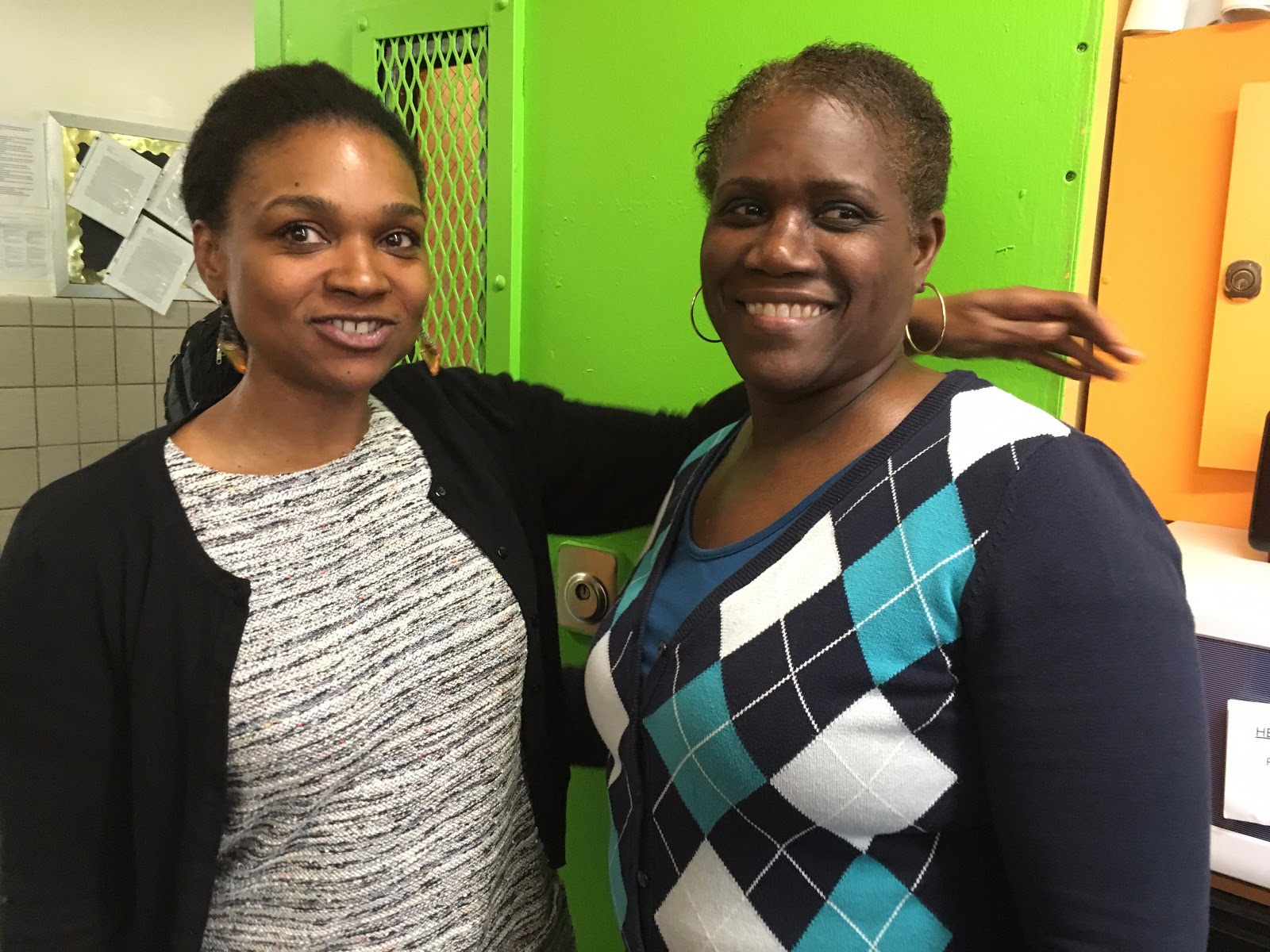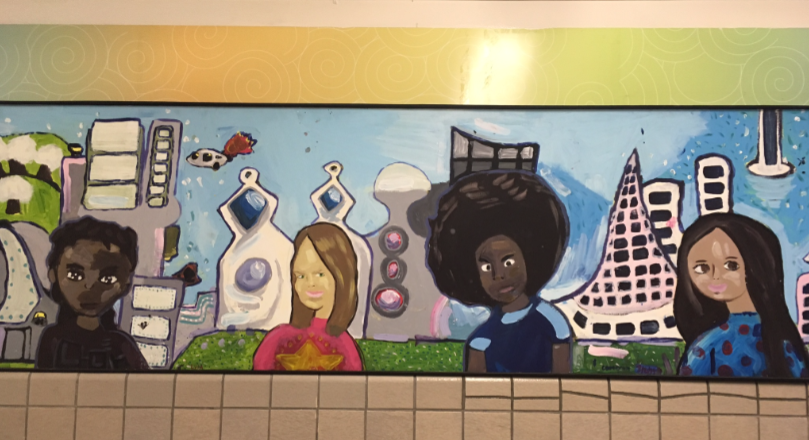Mastery Collaborative (MC) works with 40+ mastery-based middle and high schools around New York City. In the 2016-17 school year, our community of practitioners focused on understanding and using culturally responsive education (CRE) together with mastery practices. CRE asks us to actively welcome young people’s identities, experiences, and interests into school, and to empower learners socially and academically. In striving for equitable and responsive learning environments for the children of NYC, we knew we needed models. And, we knew the students would be invaluable partners. How can we jk how successful we are in attempts to be responsive—unless the students themselves tell us?
Student voice can be proof positive of effective change—and a powerful driver of new practices. When your school needs to know how well change is working, ask the experts, the students—they will tell you what is what! Learning what matters to young people can give us adults clarity and focus, and can help great work spread. So, as we from MC HQ make the rounds to schools, we are often ask students to reflect back what’s meaningful about their school experiences—and we find it useful to listen, and to share out what they say. The students make the case best for themselves.
The short interview below is an example. MS 250/West Side Collaborative Middle School has dedicated efforts to combining CRE and mastery-based learning. These students’ words illuminate the power of this work for educators from New York City and beyond—wherever adults are striving to create schools where learners feel they belong, can thrive, and are empowered to own and drive their own learning.
—Joy Nolan, MC Co-Director, August 15, 2017

WSC students in class with teacher Paul Kehoe, who helps to lead mastery/CRE work at the school
How would you describe the social community here at your school?
Sabrina, 8th grade
For us there’s no discrimination, nothing against someone. We don’t do that. We make friends based on everything we have in common; we don’t discriminate about what you do. We all interact, no particular age, no grade—we don’t care about any of that. Some of us have friends outside of school. We are all family.
Sakhr, 8th grade
Without school, you wouldn’t have as many friends as you have. We do community activities to help us make new friends. It’s part of life. You need to interact with people to get places in life. Knowing people can help you reach your goals.
Every year is a different step. At first, I was not comfortable with anything. Then we did community activities and as soon as we started, I had new friends. Now it’s 8th grade, and I know everyone, and we’re cool. Academically, me and Sabrina sit next to each other every class. If I’m confused about my homework—like: what was it?—she will help me out.
Can you “be yourself” at your school, and why does that matter?
Ashley, 7th grade
In my classes, I get to really show myself and who I am, and my interests in school. This is what school is about—it’s about being creative and collaborating with other people.
I wouldn’t have what I have now, without coming here. I just came from my Readers and Writers class. We were sharing about how structure and word choice contribute to a poem. We were bringing ourselves into the class. We like to put ourselves into the work. We feel strongly that it’s important to put ourselves into it and really value the work we do, because it talks about the world and what is going on today. We are the next generation.
In my old school, I wasn’t really able to be myself and show emotion. Here, I can go talk to a teacher about how I feel. I’m happy that I’m free to express myself to the people here. I would say to my teacher at my old school: I don’t feel happy, I don’t feel like I’m being myself. Here I can just be me. If I can’t be me…I don’t really know. If I can’t be me then…what am I being? I think it’s really important to be our true selves.
Sakhr, 8th grade
In my [previous school] kindergarten, we were coloring in dogs, and I wanted to make one purple because I really like purple, and the teacher got really mad. I know it sounds crazy but…Last year [here at WSC MS], this kid Tomas in 8th grade, he colored himself orange, and he had green hair, and I actually liked it, and we all liked it. The teacher said she liked it.
How does your school communicate to you about your learning?
Ashley, 7th grade
They have these little post-its and they write little things we need to work on and give it to us, one by one, so we know what to work on. We get those even before the progress report.
Last time I got my progress report I was confused by my math grade—I thought I did well on one subject. I emailed my teacher and said: Can I come up for lunch and talk about this? When I did, it was so much more clear. She actually told me how I could improve. It wasn’t just: improve. It was: I’m going to talk with you and give you things so you can improve.
Mirea, 6th grade
We get draft report cards that let us know how we are doing while we can still change things. We have 3 things. We get draft report cards, and progress reports—a sheet that breaks down the standards you are learning—and then a final report card.
Sabrina, 8th grade
Like in math, I got a 4 in linear equations and 2.5 in something else. So it’s kind of easy to see what we need help with. Then we have time to revise that and hand in work. The draft report card averages grades. We get it and see at a glance what subject we need to work on. We can email the teacher, talk to them. For the final report card, sometimes kids stumble with a subject or something, and it really helps to have the teachers there to help us get better at things.
How do teachers at your school build a relationship with students?
Sabrina, 8th grade
We have a lot of trust in the teachers and they will understand where we are coming from, they will help us out and communicate with us. If we couldn’t be ourselves in this school, what would be the purpose? We couldn’t choose a career without knowing who we are because it would be lost.
We can talk to any teacher; they are with us through thick and thin. You get to be yourself. We are all equal, all the same, and all different—[it’s] totally cool and amazing. The teachers keep it real with us. They let you speak to them. They are open.
Ashley, 7th grade
The teachers can identify our work—they can say: This is so-and-so’s, just from what we’ve said, because they know us.
Sakhr, 8th grade
They are talking our language so they understand what we are saying, and we understand what they say. In math with Ms. Pierre, we were learning translations and she was joking and dancing, to the left, to the left. We get to feel like: This is going to be fun! There’s time to work and time to play around, and some teachers we are comfortable with and can understand the work even more.
Two types of learning: I want to learn this because and there is nothing after the because. Or I want to learn this because it’s fun and it’s what I want to do.
In science class, we were learning about the atmosphere. We were focusing on eclipses and I was a little confused about why the angle of the earth affects that. Another teacher would say look it up but she took a globe and used a projector as a light and she actually showed me, so I understood it better.
Other times, it’s ‘Okay, I need to work on my grammar,’ but the teacher will say: Thank you for saying it that way, instead of putting it in a negative way. When we revise, we do it all together.

West Side Collaborative Middle School Principal Novella Bailey with math teacher Ms. Pierre
How do adults at your school work on behavior issues with students?
Ashley, 7th grade
In 6th grade, I was a little trouble maker. We have a guidance counselor, Ms. Perez, and she helps a lot. I used to misbehave a lot. In 7th grade, I get better grades and focus on my behavior. I went to Ms. Perez and she taught me and I went to my brother and asked him how he gets along in school—he’s in high school now. He was like: I just listen to the teachers, and I started doing that.
Sabrina, 8th grade
A thing about this school [is that] you work harder and the teachers help you understand and they’re easy to talk to. I think in 7th grade, there was one issue with a group of girls, a problem was going on. They do it one by one, you don’t feel ganged up and pressured. The teachers are a role model to us.

A mural in the hall at West Side Collaborative Middle School, New York, NY